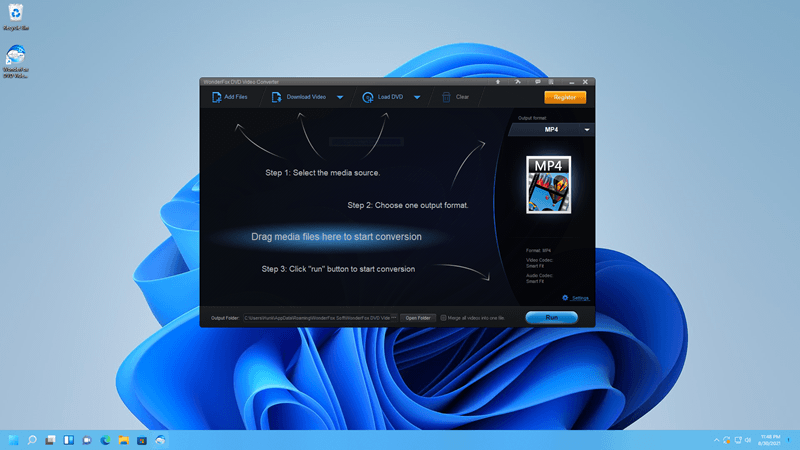
- ITUNES VIDEO CONVERTER OPTION GONE HOW TO
- ITUNES VIDEO CONVERTER OPTION GONE WINDOWS 10
- ITUNES VIDEO CONVERTER OPTION GONE WINDOWS 7
- ITUNES VIDEO CONVERTER OPTION GONE MAC
ITUNES VIDEO CONVERTER OPTION GONE HOW TO
how to change iTunes backup location windows 7Ī symbolic link connects two folders, one serving as a proxy for the other. From now on new iTunes backups will go to “C:\itunesbackup” or the location you’ve defined. You’ve successfully created the symbolic link, a virtual connection between the two directories, and changed the iTunes backup location Windows 10. Head back over to the Command Prompt and type the same command: mklink /J “%APPDATA%\Apple Computer\MobileSync\Backup” “c:\itunesbackup”. Now navigate to the current backup location – “C:\Users\Your username\AppData\Roaming\Apple Computer\MobileSync\Backup\” using the Windows File Explorer and delete the backup directory and all its content. Go into the newly-created directory by using the “cd” command. For example, create a directory in C:\ folder. Create a new directory wherever you want the iTunes to store all your backups from now on. As we’ve already located the current iTunes backup directory, make a copy of the “C:\Users\Your username\AppData\Roaming\Apple Computer\MobileSync\Backup\” directory. I’ll take you through each step of the process. You need to use the Windows Command Prompt to perform the finagling. Here I’ll show you how to use the Windows Command Prompt application to create a symbolic link that effectively tricks iTunes into backing up on to the new location you want. The symlink is a new path for iTunes to get to the backups folder. We will be using the symlink method – symbolic link to change iTunes backup location on Windows 10.
ITUNES VIDEO CONVERTER OPTION GONE WINDOWS 10
How to change iTunes backup location Windows 10 Part 2: How to change the iTunes backup location? 1. Right-click on the backup file and press “Show in Finder”. Here click on “Manage Backups”, Device backups window will pop up. If using the latest Catalina, then head over to the connected iPhone under the Locations section in the Finder window. This will show the backups associated with the particular iPhone.ī. In preferences click on Devices, right-click your device and then press Reveal in Finder.

You can also locate the files from iTunes (if macOS older than 10.15) or Finder if you’re using the latest macOS Catalina.Ī. Here you’ll find all your iPhone and other Apple devices backups, with a jumbled up string of letters and numbers. Copy and paste or type this directory location: ~/Library/Application

You can also use the “Go to Folder” menu option in the Finder menu to jump to the location. Click on the search bar (magnifier icon) in the Finder menu or press the combo command of “Command + F” in the Finder window to search the location.
ITUNES VIDEO CONVERTER OPTION GONE MAC
To find the backups on your Mac device follow the steps All the backup files will be in the folder just as in the image above. Now open Apple Computer > MobileSync > Backup folders one by one. Click in the Search bar and type %appdata% and hit Enter/Return. Above the Start button you’ll find the Search bar. To locate the list of backups manually use the Windows Start Menu’s Search box. Here’s how to get to the mobile sync folder.
ITUNES VIDEO CONVERTER OPTION GONE WINDOWS 7
On Windows 7 you’ll find iTunes backup files in the MobileSync folder. You can change the settings by enabling “Show hidden files” in the Explorer settings and then repeat the procedure. Note: If you aren’t able to find the backup folder this may be due to the AppData folder being hidden. Once in the Appdata folder double-click the “Apple” folder and then “Apple Computer” and “MobileSync” and finally go to the “Backup” folder and you’ll find all your iTunes backups.

If you downloaded the iTunes from Microsoft Store, click in the Search bar and enter %appdata% Right next to the Start button you’ll see a search bar. You can also find the backups using the Windows Start Menu’s Search box. Here’s the pathĬ:\Users\Your username\AppData\Roaming\Apple Computer\MobileSync\Backup\Ĭ:\Users\Your username\Apple\MobileSync\Backup\ Now, how to get to the mobile sync folder. On Windows 10 you can find your iTunes backup files in the MobileSync folder. ITunes backups are stored in different locations primarily based on the operating system. Part 3: Backup iOS with MobileTrans – Backup


 0 kommentar(er)
0 kommentar(er)
